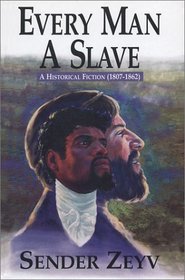Search -
Every Man a Slave
Every Man a Slave
Author:
Every Man A Slave will change the way you think about Blacks and Jews. This colorful novel, set in the first half of the 19th century, combines fast-paced action with engrossing philosophical and theological discussion from a unique perspective. Its sharply drawn protagonists observe and reflect on broad historical trends even as they experienc... more »
Author:
Every Man A Slave will change the way you think about Blacks and Jews. This colorful novel, set in the first half of the 19th century, combines fast-paced action with engrossing philosophical and theological discussion from a unique perspective. Its sharply drawn protagonists observe and reflect on broad historical trends even as they experienc... more »
ISBN-13: 9780967704432
ISBN-10: 096770443X
Pages: 496
Rating: ?
ISBN-10: 096770443X
Pages: 496
Rating: ?
0 stars, based on 0 rating
Genres:




